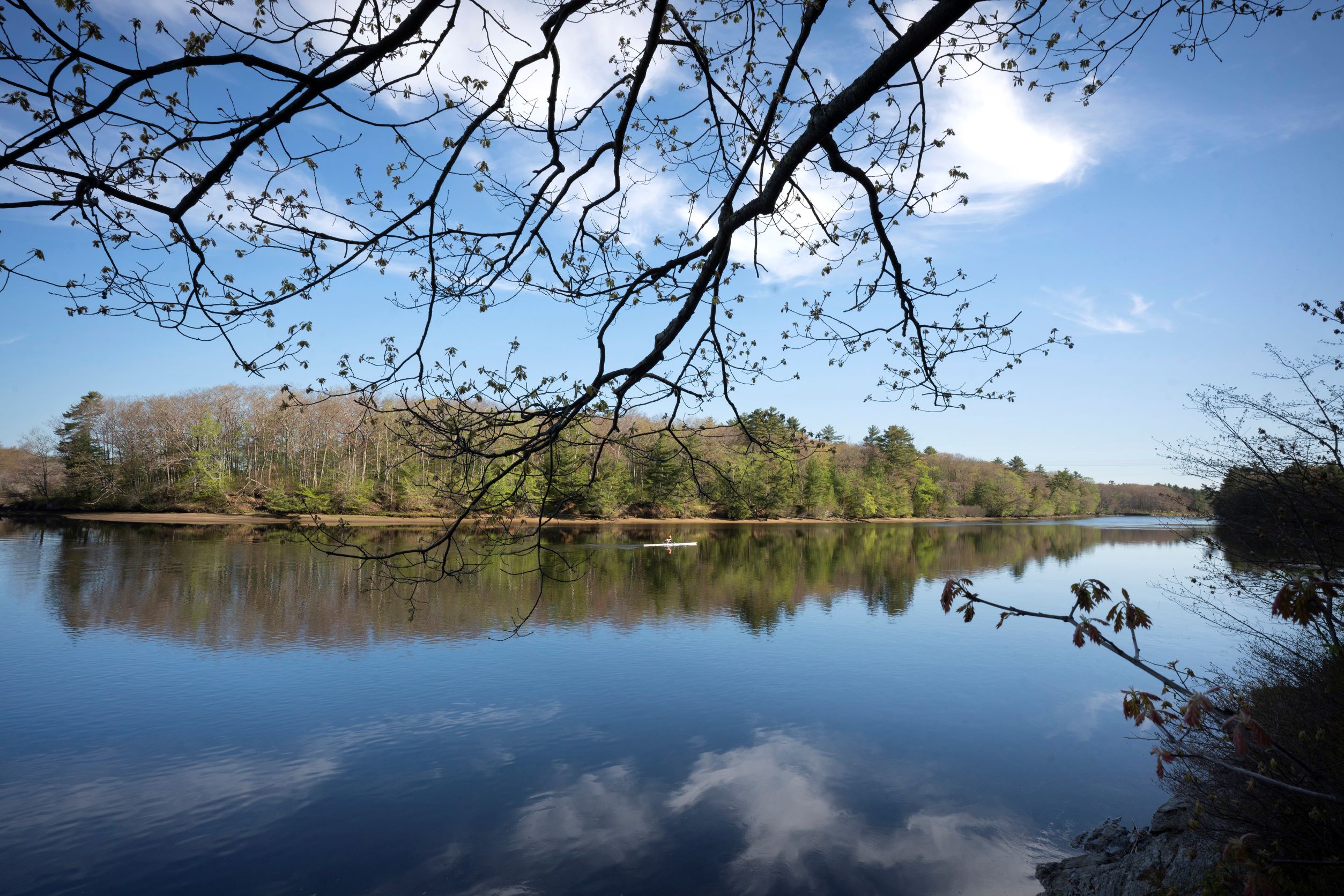
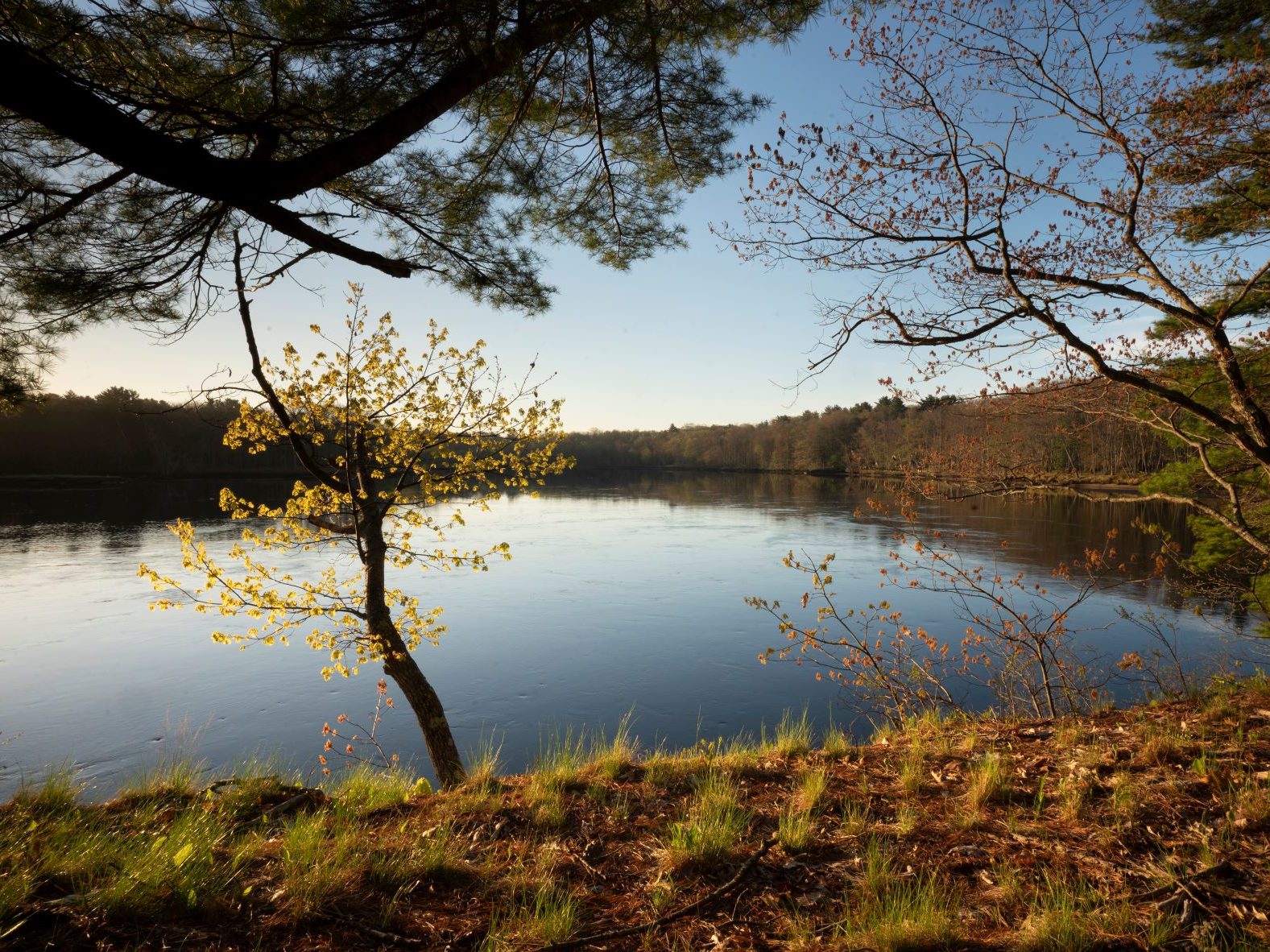
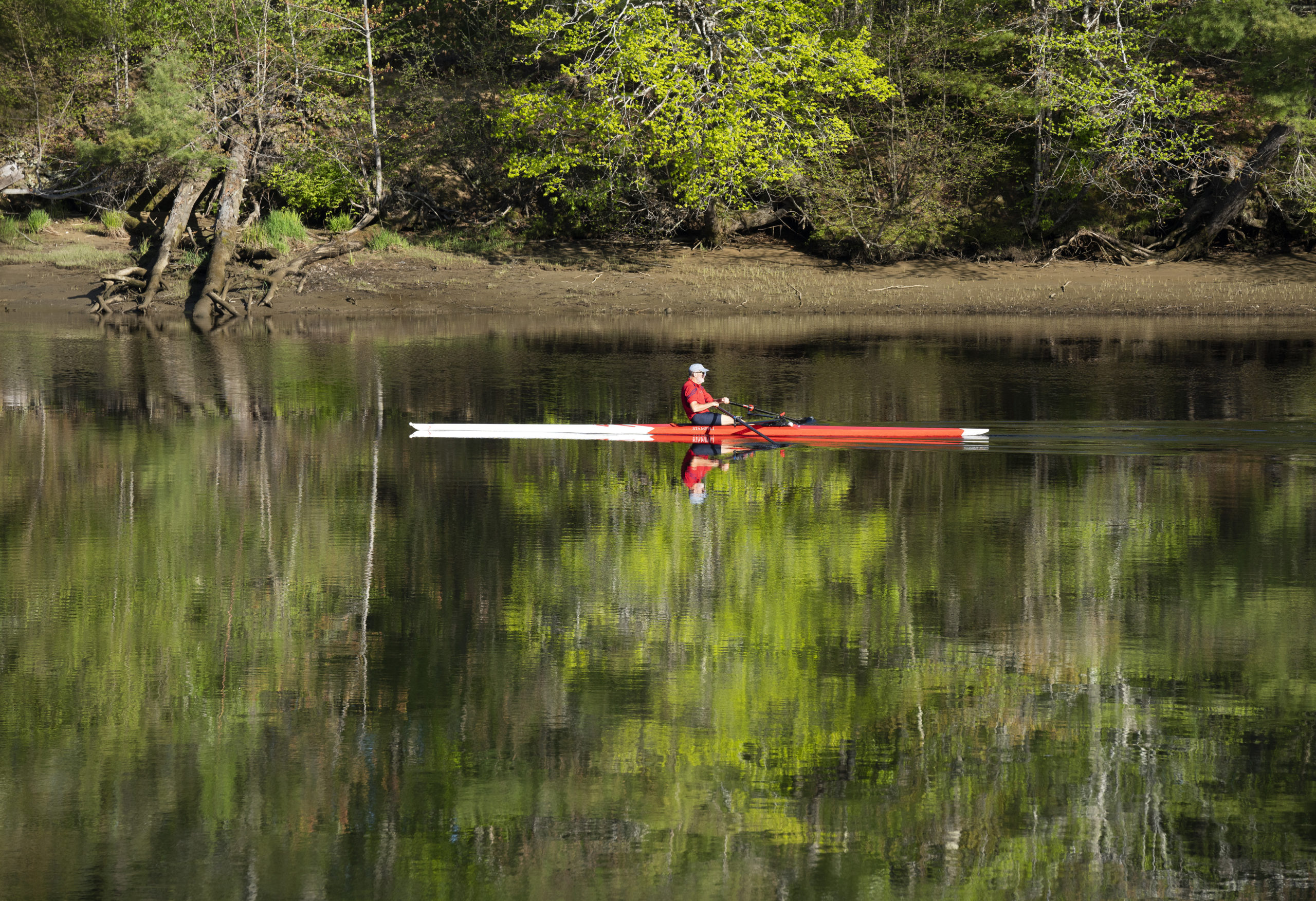
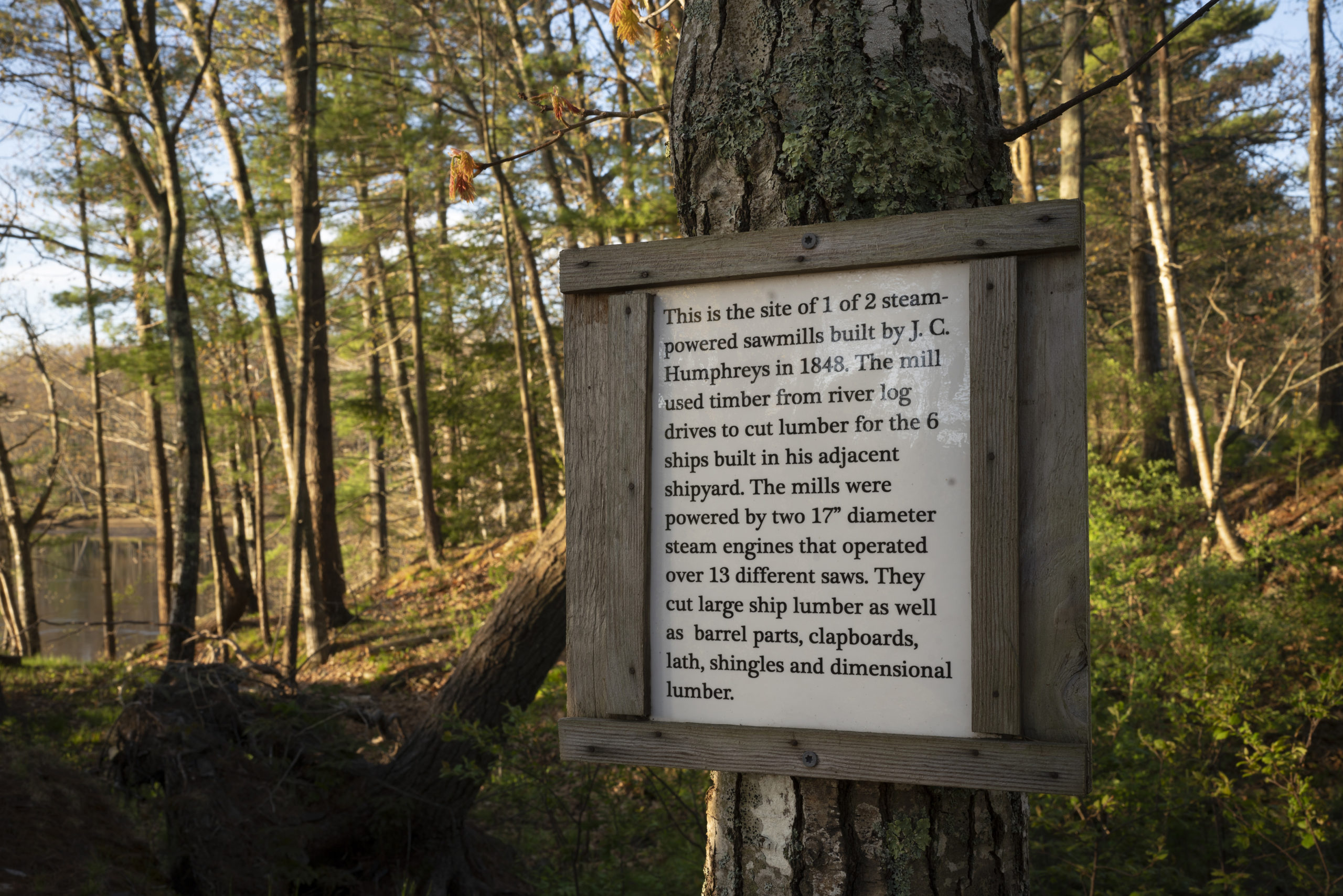
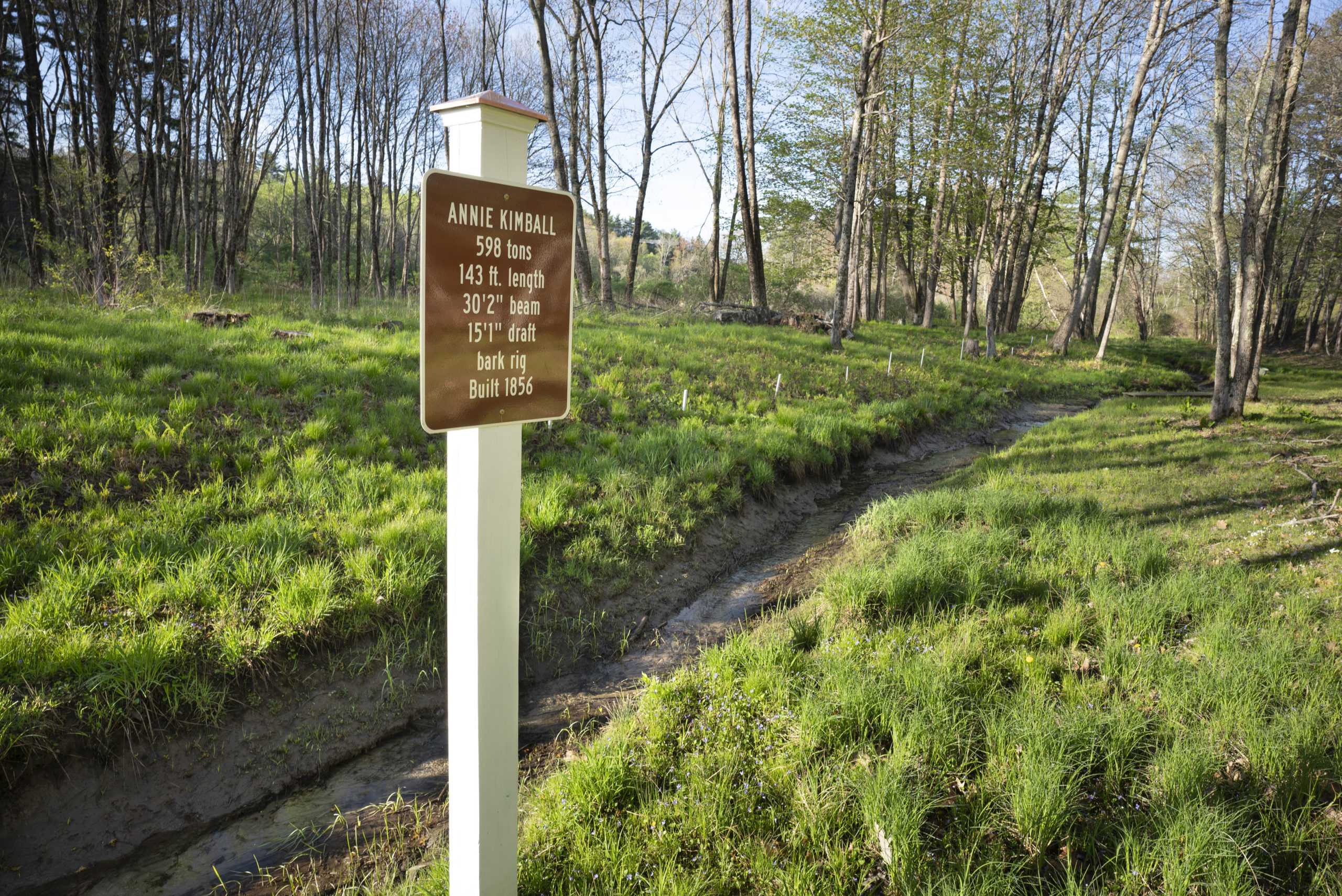
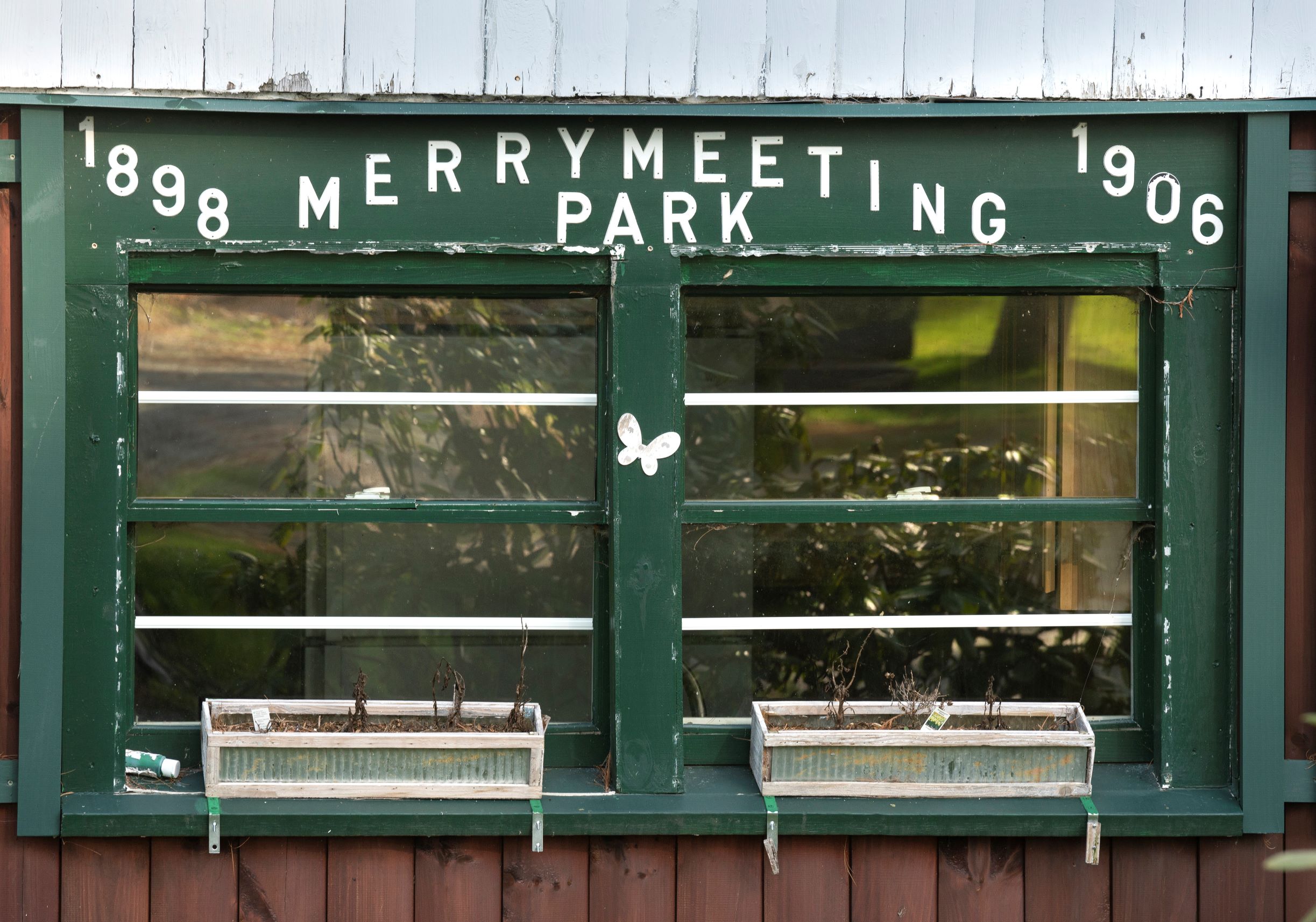
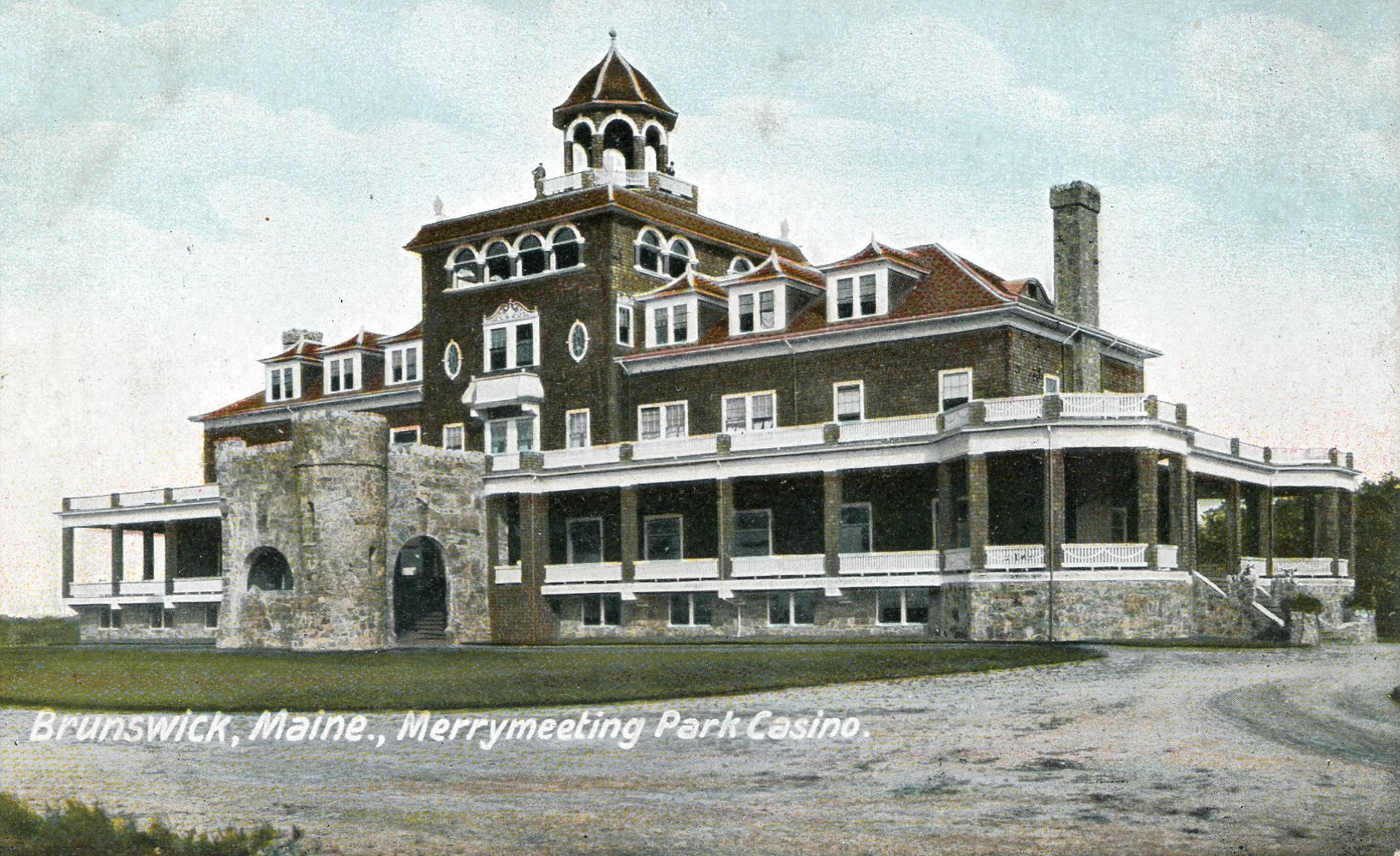
Summer 1898 was a grand time for Brunswick, when thousands of visitors took a five-cent trolley ride for the opening of Merrymeeting Park with its castle-like entrance at the bend of the Androscoggin River. It boasted a four-story casino, zoo, 4,000-seat amphitheater, broad lawns and festivities that lasted late into the evening with fireworks and dancing under the stars.
Little is left today of the amusement park built on the site where early Abenaki people fished and shipbuilders launched schooners. By 1906 the park had scaled back its events, and within years its structures were gone and lagoons drained.
But this year Merrymeeting Park has a new future with the Town of Brunswick's purchase of the 42.5-acre parcel with grant support from MaineCF's Maine Land Protection program and donor-advised funds. The town has eyed this site for years as its top place to preserve if the landowners decided to sell.
The scenic area so close to downtown Brunswick will have interpretive signs to mark key historic sites and wildlife habitats and create one more link in the town's growing network of protected places that includes five islands in the river.
"There's so much history around that site," said Tom Farrell, Brunswick parks and recreation director. "There's evidence that goes back thousands of years of human activity on the property. It's just a really special place."
Maine Land Protection is one of two recent competitive grant programs that grew from MaineCF's first land conservation program, which began in the early 1990s. The Maine Land Protection grant program supports land acquisitions and easements, while Conservation for All grants help open the outdoors to more people.
In 2021, donors with advised funds made clear their support for conservation by directing $474,000 to supplement Maine Land Protection grants of $145,000. Since 1983, when MaineCF's first conservation grant went toward the purchase of Laudholm Farm in Wells, the community foundation has awarded more than $28 million in grants to 153 land trust and land conservation organizations.
Conserving both urban and rural lands is important in Maine - and not only to provide more access to nature. Forests are critical as we combat climate change - they absorb about 60 percent of our carbon emissions every year.
The Maine Climate Council's action plan includes a goal to increase conserved lands in the state to 30 percent by 2030.
That's a lot of land, with 12 million acres in Maine - roughly three and one-half times the size of Connecticut. But we're getting close, with about 21 percent conserved already. Karin Tilberg, president and CEO of the Forest Society of Maine, thinks we can do it.
Just this spring, the Forest Society of Maine and the Northeast Wilderness Trust permanently conserved 21,300 acres of land in Grafton Township on the New Hampshire border that buffers two American icons - a famous stretch of the Appalachian Trail and Umbagog National Wildlife Refuge. It also fills the last gap in a conservation corridor between the two states with views of the White Mountains and Mahoosuc Range. Donor-advised funds at MaineCF contributed $168,000 toward the project.
Efforts like these are also crucial to help plant and animal species remain resilient in the face of climate change through conservation corridors devoid of roads, cars, and houses, Tilberg noted.
"For the first time in probably a long time, we are losing forest land in Maine to development," Tilberg said. "There is increasing development pressure and we are seeing huge spikes in real estate activity in gateway communities, pressing into the North Woods."
The easement permanently conserves public access to the area with year-round opportunities, from hiking in the summer to grouse hunting in the fall and Nordic skiing from early winter to spring. It's also a win for Maine's economy with outdoor recreational businesses and forest management opportunities that will continue to provide jobs.
"So many people contributed, so many foundations contributed, and it was a very moving experience to see the outpouring of commitment to the goals of the project and to just keeping Maine's forest," Tilberg said.
She added, "So many people knew of the area, but many people also gave just because they wanted to do what they could. And that's wonderful."
Slideshow captions:
- Merrymeeting Park in Brunswick, a former trolley park, will be restored as public land. Gregory Rec photos
- Merrymeeting Park in Brunswick until recently was privately owned land. Now, it will serve as a public park.
- A man rows a scull up the Androscoggin River as seen from the property of Merrymeeting Park.
- This sign details the steam-powered sawmills J.C. Humphreys used to cut logs into timber for ships, barrel parts, clapboards, shingles and dimensional lumber.
- A sign lists the details of the ship Anne Kimball alongside this ditch, where J.C. Humphreys launched the ships he built in the late 1800s.
- What remains of the former Merrymeeting Park trolley station.
- A postcard featuring an image of the hotel at the former Merrymeeting Park. Photo: Special Collections at Fogler Library, University of Maine





